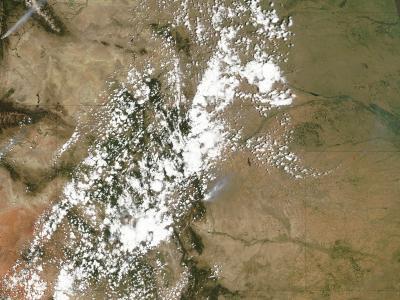NASA satellites continue to provide coverage of the smoke and heat signatures generated from wildfires raging in the western United States. The Waldo Canyon Fire is threatening populated areas, and is located near Colorado Springs, Colo.
The Waldo Canyon Fire was discovered on June 23, 2012, burning in Pike National Forest near Colorado Springs, Colorado. By June 27, it had burned 15,517 acres (6,280 hectares), was 5 percent contained, and had forced at least 32,000 people to evacuate their homes.
